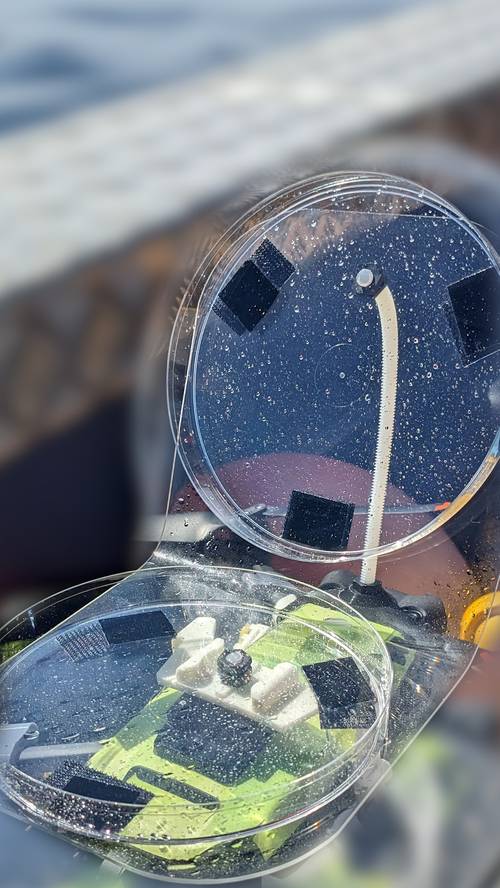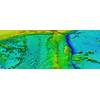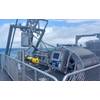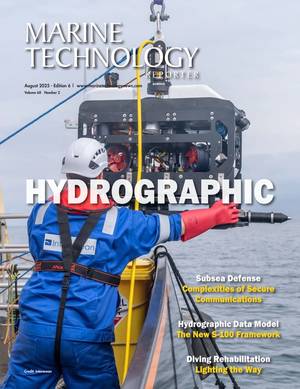New Study Shows Connection Between Whale Health and Respiratory Microbes

Dish with droplets of blow mounted on a small drone. (Photo by Amy Warren, NEAq/WHOI, NMFS/NOAA Permit #21371)
A new study published today in The ISME (International Society for Microbial Ecology) Journal marks the first time scientists have shown a connection between respiratory microbes and the health of a free-ranging whale population.
The study, Respiratory microbiomes reflect whale health, opens the door to effective ways to monitor and protect the critically endangered North Atlantic right whale, whose population has dwindled to fewer than 400 individuals.
Between 2016 and 2024, researchers from the Woods Hole Oceanographic Institution (WHOI), University of St Andrews, New England Aquarium, SR³, and Whale and Dolphin Conservation collected 103 respiratory samples from 85 North Atlantic right whales using drones. The researchers found that the microbial matter whales exhale through their blowholes carries valuable information about their health, including distinct, individual microbial patterns that can be linked to characteristics such as robust versus thin whales, among other health metrics.
As the drone flies over a whale as it exhales, it holds a petri dish in the exhalation to collect a sample of the breath. Using drones provides a stable, quiet platform, minimizing stress and disturbance to the animal, and allows permitted researchers to access areas or animals that are difficult and dangerous to reach. Microbial samples were paired with multiple health indexes, including photogrammetric body condition data, visual health assessments, and estimates from a long-term health and survival model. By combining microbiology, drone-based imaging, and long-term ecological datasets, researchers show how interdisciplinary methods can expand understanding of whale health.
The study underscores the importance of long-term North Atlantic right whale datasets, including photo-identification catalogs and health assessments, as critical baselines for testing new health indicators.
The research was conducted with support from the Strategic Environmental Research and Development Program, Office of Naval Research, NOAA, and SR³.















 August 2025
August 2025



